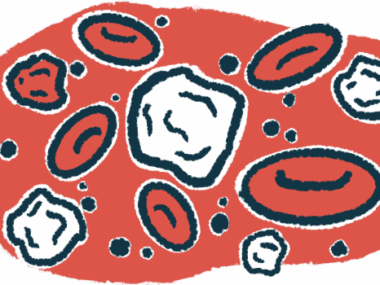Fluorescent dye assists in surgical removal of small pancreatic tumors
Case study finds technique safe, effective for 5 female patients in China
Written by |

Fluorescent imaging can safely help surgeons find and remove small tumors in the pancreas, according to a recent report.
The case study describes how the technique, which uses indocyanine green fluorescent staining, was used in five Chinese women to surgically remove small neuroendocrine tumors, which are abnormal masses of tissue that form in hormone-releasing cells, in the pancreas.
“Our results show good localization and have the potential to provide a valuable clinical aid,” researchers wrote.
The study, “Initial Application of Fluorescence Imaging for Intraoperative Localization of Small Neuroendocrine Tumors in the Pancreas: Case Report and Review of the Literature,” was published in the Journal of Gastrointestinal Cancer.
Pancreatic neuroendocrine tumors (PNETs), also known as islet cell tumors, develop from the hormone-producing cells of the pancreas called islet cells. PNETs can be functional, meaning they produce excessive amounts of hormones like insulin or gastrin, or nonfunctional and don’t secrete hormones. PNETs account for a small portion of pancreatic tumors.
Pancreatic neuroendocrine tumors typically removed by laparoscopic surgery
The typical approach for PNETs is surgical removal of the tumor. For small tumors less than two centimeters in size, it is possible to perform laparoscopic surgery, also known as keyhole surgery. This procedure is minimally invasive, where the surgeon makes a few small incisions in the abdomen and uses a small video camera to guide in the surgical removal of tissue, including tumors.
This surgical technique is often faster and less invasive than traditional surgery, resulting in shorter hospital stays and faster recovery times. However, it can be challenging to precisely locate small tumors using ultrasonography during laparoscopic surgery.
“Laparoscopic ultrasound’s search time for [tumors] is unpredictable and may involve repeated searches, positioning uncertainties, and even errors,” the researchers wrote.
Indocyanine green fluorescent staining has been used in laparoscopic surgery of the liver, providing surgeons with real-time and accurate visualization of the boundaries of a green-colored liver tumor. However, the use of fluorescent staining in pancreatic surgery is limited.
“Consequently, we have ventured to utilize indocyanine green fluorescence imaging for intraoperative localization of small neuroendocrine tumors of the pancreas,” the researchers wrote.
In the case study, researchers analyzed data from five women, ranging in age from 53 to 83 years, who underwent laparoscopic local surgery for pancreatic tumors at a hospital in China.
While three of the patients had no symptoms of their tumors, one woman had pain in her abdomen and another had hypoglycemia, or low blood sugar.
Tumors identified 1 minute after injection of indocyanine green fluorescent dye
During surgery, the patients were injected with indocyanine green fluorescent dye. After about one minute, surgeons were able to identify the tumors by their green labeling and examine their location, borders, and developmental aspects.
Surgeons then removed the tumors guided by real-time imaging of their fluorescent green-dyed edges.
After the surgery, the cancerous tissue was further examined. The researchers found that four of the patients had neuroendocrine tumors that were low grade and with a low likelihood of growing and spreading quickly. The one remaining woman had endocrine cell hyperplasia, a condition meaning that she was at higher risk of developing future neuroendocrine tumors and would be monitored closely by doctors in the future.
Importantly, all patients had what doctors call “negative pathological margins,” meaning no cancer cells were present at the edge of the tissue removed during laparoscopic surgery.
None of the women who underwent laparoscopic surgery to remove their pancreatic tumors had serious complications from surgery, such as bleeding in the abdomen.
“Indocyanine green fluorescence imaging proves beneficial for the intraoperative localization of small neuroendocrine tumors in the pancreas, offering excellent safety,” the researchers concluded.








